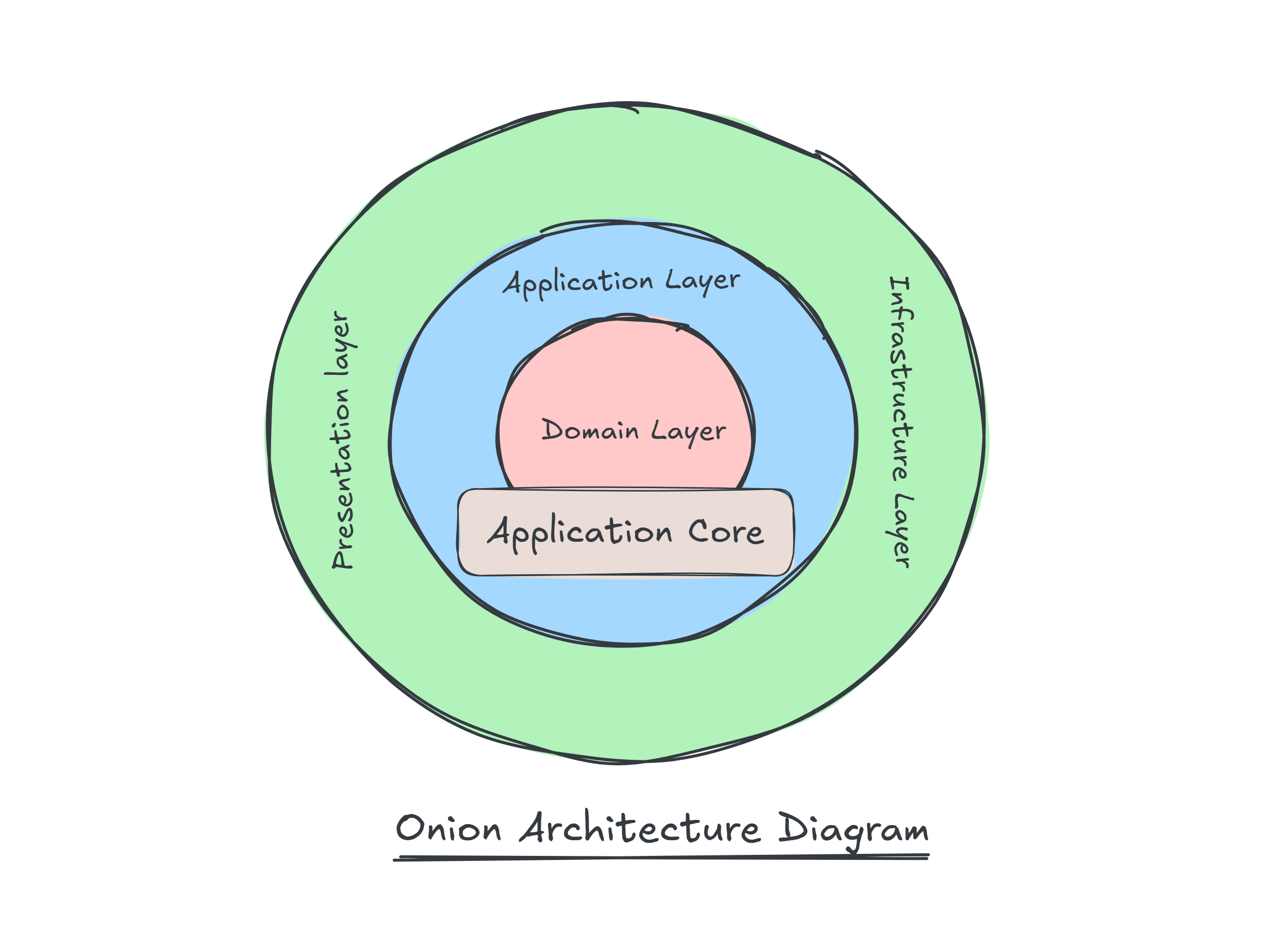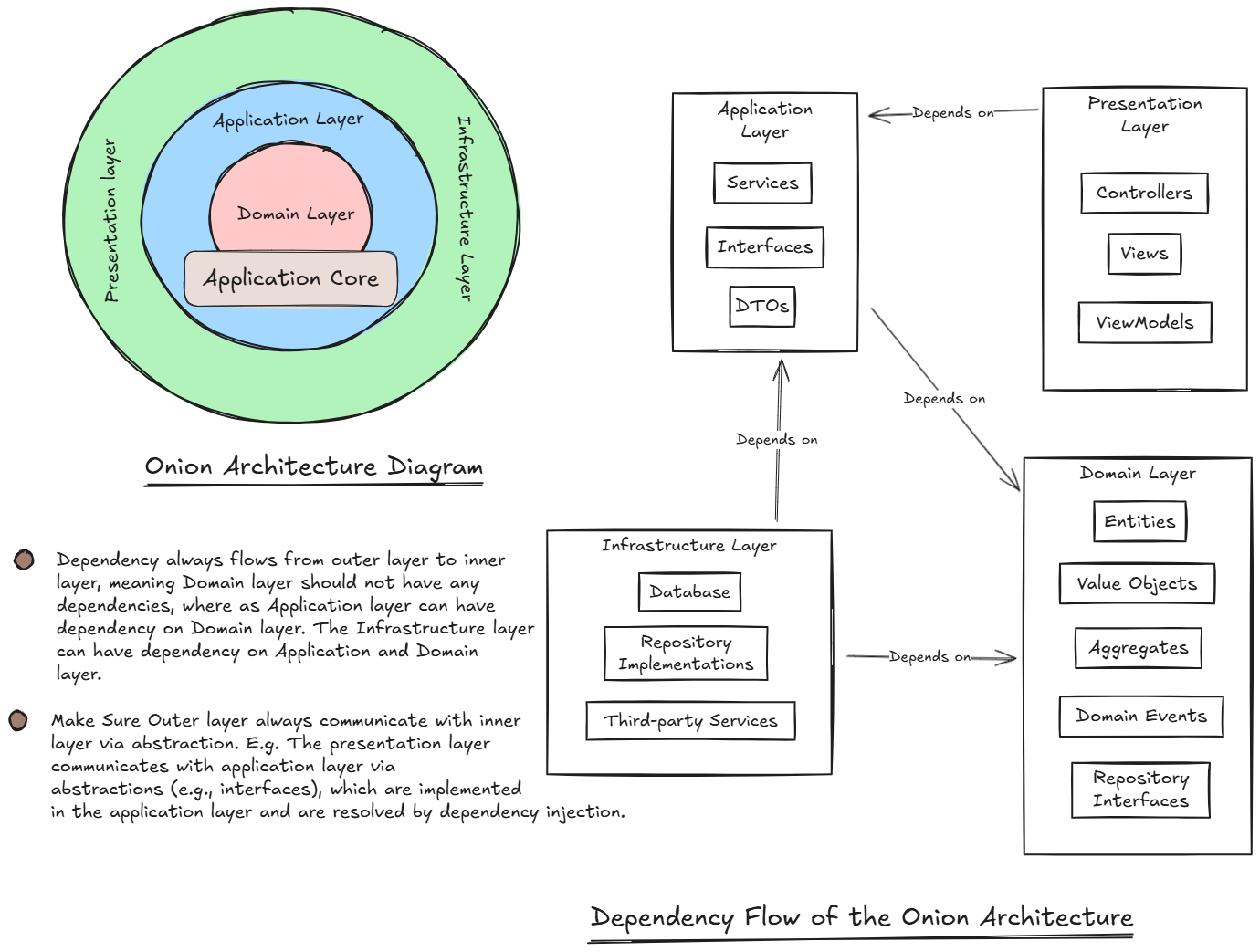Why Choose Onion Architecture for Better Software Development Practices
 Anil gurau
Anil gurau
Ever felt trapped by your application's architecture? Last year, a simple database change turned into a massive team effort, forcing us to touch almost every part of our old N-layered setup. That's when we realized we needed a better approach: Onion Architecture.
Before we get into the details of Onion Architecture, let's talk about why we switched. It wasn't just about fixing that database problem; we wanted a system that was easier to maintain and change in the future.
Why We Chose Onion Architecture?
So, why did we pick Onion Architecture? Well, after that database change mess, we took a hard look at our old setup. We realized it had some serious issues that were slowing us down:
Everything Was Mixed Together: Changing one thing broke other things.
Business Rules were Hard to Find: Our main logic was spread all over.
Hard to add new features: Adding new features took way longer than it should have.
Hard to understand: New team members had a really hard time understanding the code.
We needed something to fix this. Onion Architecture looked good because:
Things don't depend on each other: Our main code wouldn't depend on databases or the user interface.
Business rules are the most important: Our main logic is at the center and untouched.
Easy to swap out technology: If we wanted to change database or UI technology, it would be much easier.
Easy to integrate third-party services: It would be much easier to integrate third-party services like email services, payment integration, etc.
Code is easier to understand: The code becomes more organized and easier to follow.
So, we knew Onion Architecture was the answer for us. But what does it actually look like inside?

As you can see, it's like an onion, with different rings inside. Each ring has its own job. The important thing is how these rings talk to each other, or more importantly, how they don't talk to each other. Let's break down each layer and see what it does.
Layers of Onion Architecture
1. Domain Layer
It's the innermost layer, containing your core business logic and entities. This layer is incredibly important because it's almost entirely untouched by changes happening around it. It's pure business logic, meaning it doesn't care about databases, user interfaces, or any other external factors. It's just the rules and data that make your business work.
The Domain Layer typically contains:
Entities: These are the core business objects, like 'Customer,' 'Order,' or 'Product.'
Aggregates: Collections of related entities treated as a single unit.
Repository Interfaces: Definitions of how to access and persist entities, without specifying the actual implementation.
Domain Events: Notifications of significant changes within the domain.
Value Objects: Immutable objects that represent domain concepts.
2. Application Layer
The Application Layer coordinates how your app uses its core logic. It sits between the Domain Layer and the UI/external layers, connecting them without exposing the Domain directly.
The Application Layer typically contains:
Application Services: These services define the application's use cases. They receive requests directly from the UI or other outer layers and instruct the Domain Services on what to do.
Data Transfer Objects (DTOs): These objects handle the transfer of data between the Application Layer and the outer layers, keeping the Domain Layer isolated from external data structures.
Interfaces: This layer defines interfaces that the Infrastructure Layer will implement. This ensures that the Application Layer remains independent of specific infrastructure implementations.
3. Infrastructure Layer
The Infrastructure Layer connects your app to the outside world. It handles databases and other external services. It's the 'where' your app interacts. This layer changes most but doesn't affect the core logic.
The Infrastructure Layer typically contains:
Database Implementations: This is where the actual code for interacting with databases resides. It implements the repository interfaces defined in the Domain Layer.
API Integrations: This is where your application connects to external APIs, handling communication and data translation.
External Service Integrations: This is where your application connects to external services like email, payment gateways, etc.
Specific Technology Implementations: This is where any specific technological implementations live. For example, file system access, network communication etc.
4. Presentation Layer: It's the layer users interact with directly, whether it's a web page, mobile app, or desktop application.

So, that's how the Onion Architecture works! We have different layers, and we know how they talk to each other. Remember, the middle part (Domain Layer) should stay clean.
Onion vs N-Layered Architecture
We have seen how Onion architecture works, now let’s see how it is better than N-Layered Architecture.
- Dependency Direction:
N-Layered: Each layer depends on the layer below it. This creates a fragile structure where changes in lower layers can ripple through the entire application.
Onion: Dependencies point inwards, towards the core business logic. This isolates the core, making changes in outer layers less risky.
- Testability:
N-Layered: Testing becomes complex due to tight coupling. Changes in one layer often require multiple layers testing.
Onion: The isolated core allows for easier unit testing of business logic, leading to more reliable code.
- Maintainability:
N-Layered: Code becomes harder to maintain as dependencies grow. Changes require careful coordination across multiple layers.
Onion: The clear separation of concerns simplifies maintenance. Changes in infrastructure or UI don't impact the core logic.
- Separation of Concerns:
N-Layered: Business logic can bleed into other layers, making the code harder to understand and evolve.
Onion: Enforces a clean separation, with each layer having a distinct responsibility.
In essence: Onion Architecture prioritizes a stable core, making your application more adaptable to change. It's about building an architecture that evolves**.**
Real-World Scenarios: When Onion Architecture Fits (and When It Doesn't)
Onion Architecture shines in projects with complex business rules, evolving needs, microservices, TDD, long-term maintenance, and when large teams work on separate modules.
It's less ideal for simple CRUD apps, small projects, performance-critical systems (sometimes), or when your team lacks familiarity.
Choose Onion when you need stability, flexibility, and clear module separation for complex projects, especially with larger teams. OPT for simpler architectures for basic or short-term needs.
From Scenarios to Practice: Seeing Onion in Action
Now that we've seen when Onion Architecture fits, let's look at a practical code example. To provide you with a real-world context, I've created a simple project to demonstrates the key principles we've discussed, which is available on GitHub:
Conclusion: Building Maintainable and Scalable Applications
Onion Architecture offers a powerful way to build maintainable and scalable applications. While it might seem complex at first, its benefits become clear as your application grows.
By understanding and applying Onion Architecture, you can build applications that are easier to test, maintain, and evolve. Happy coding!
Subscribe to my newsletter
Read articles from Anil gurau directly inside your inbox. Subscribe to the newsletter, and don't miss out.
Written by
